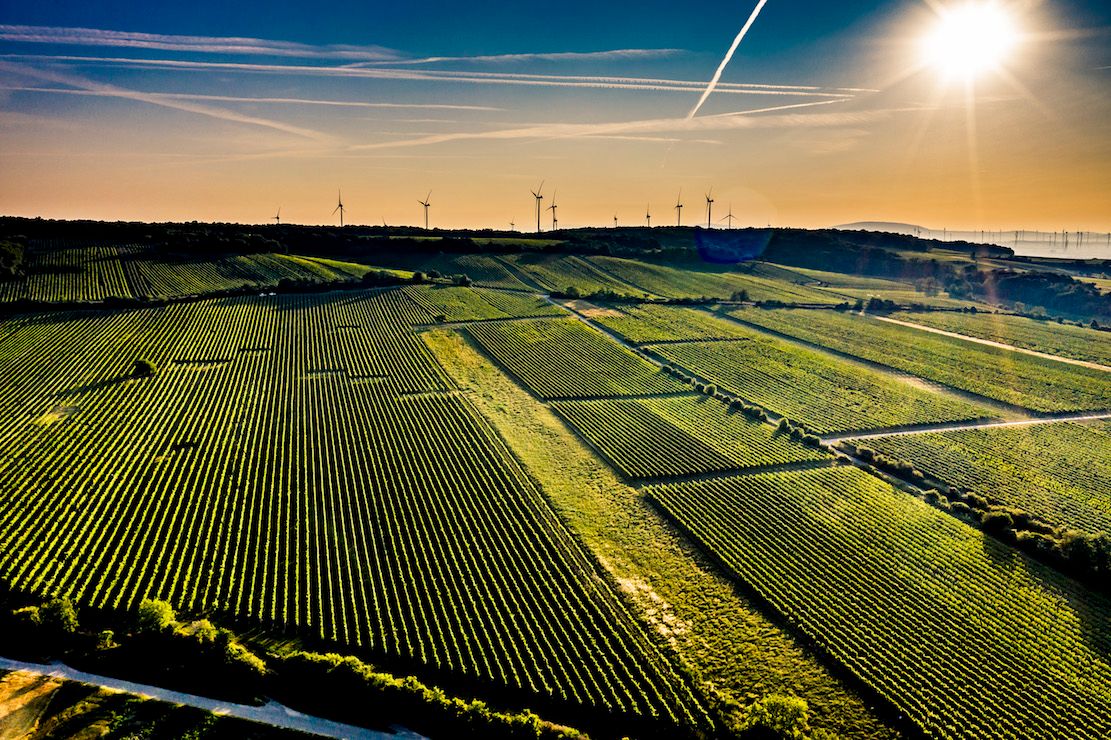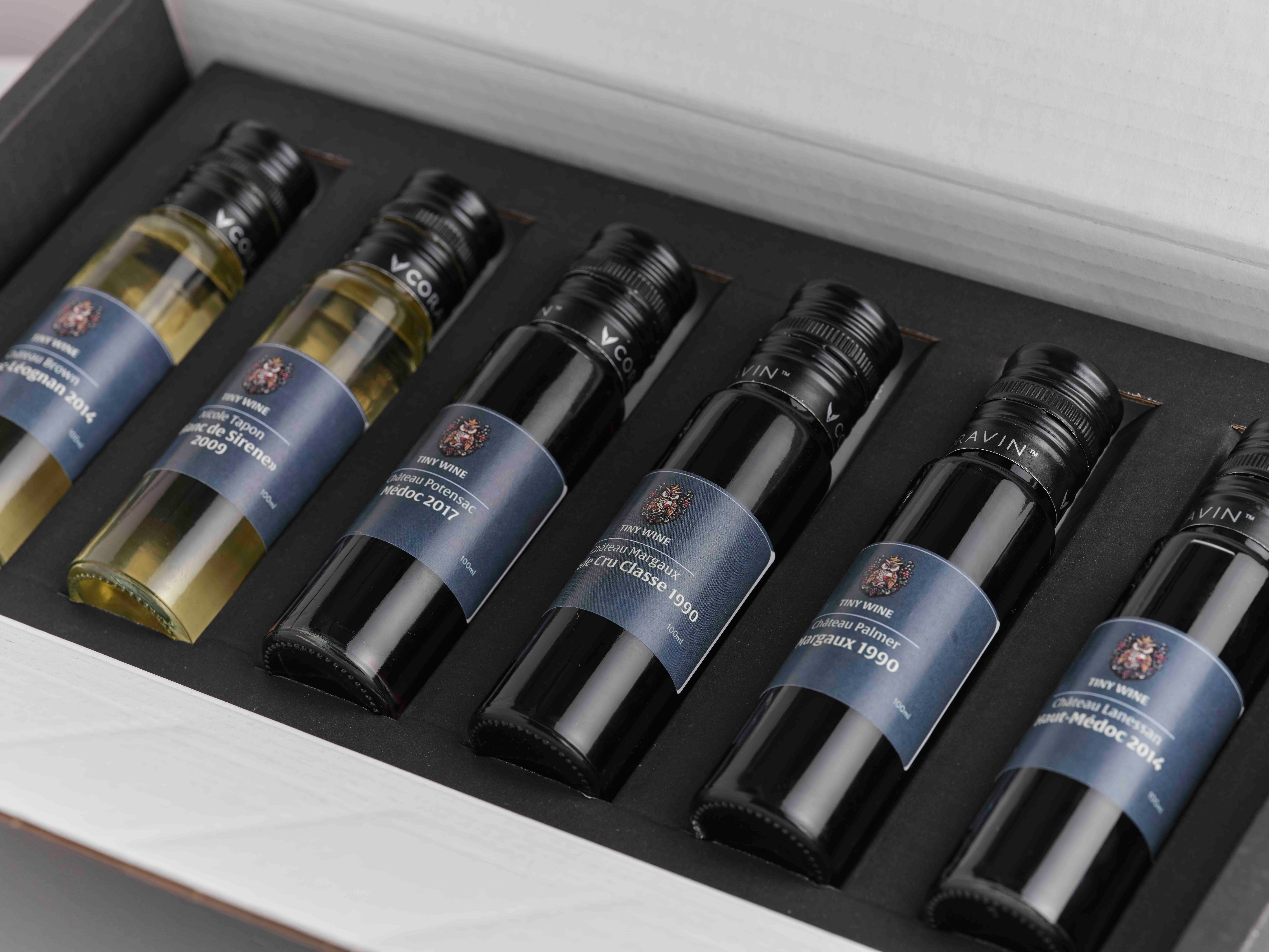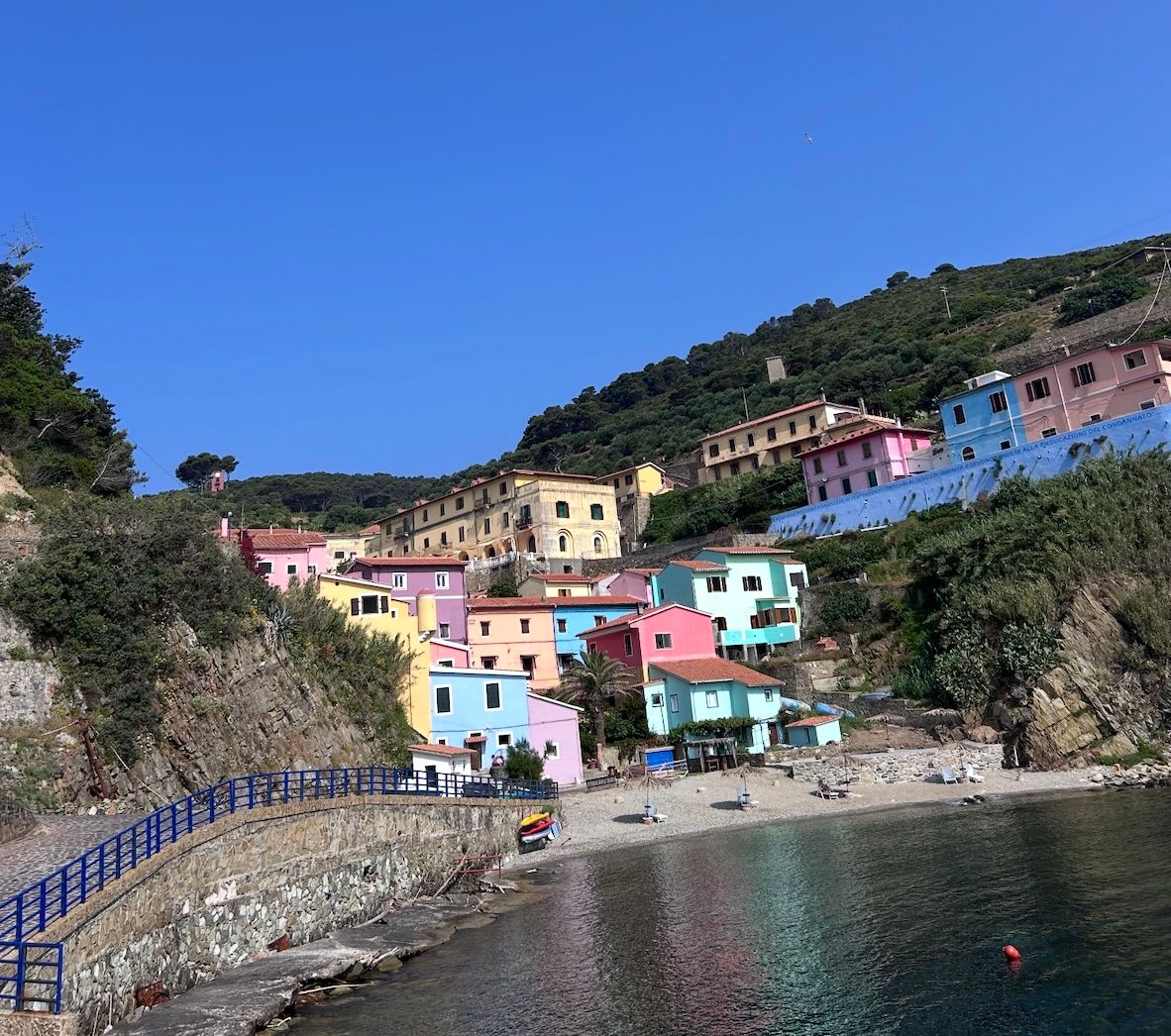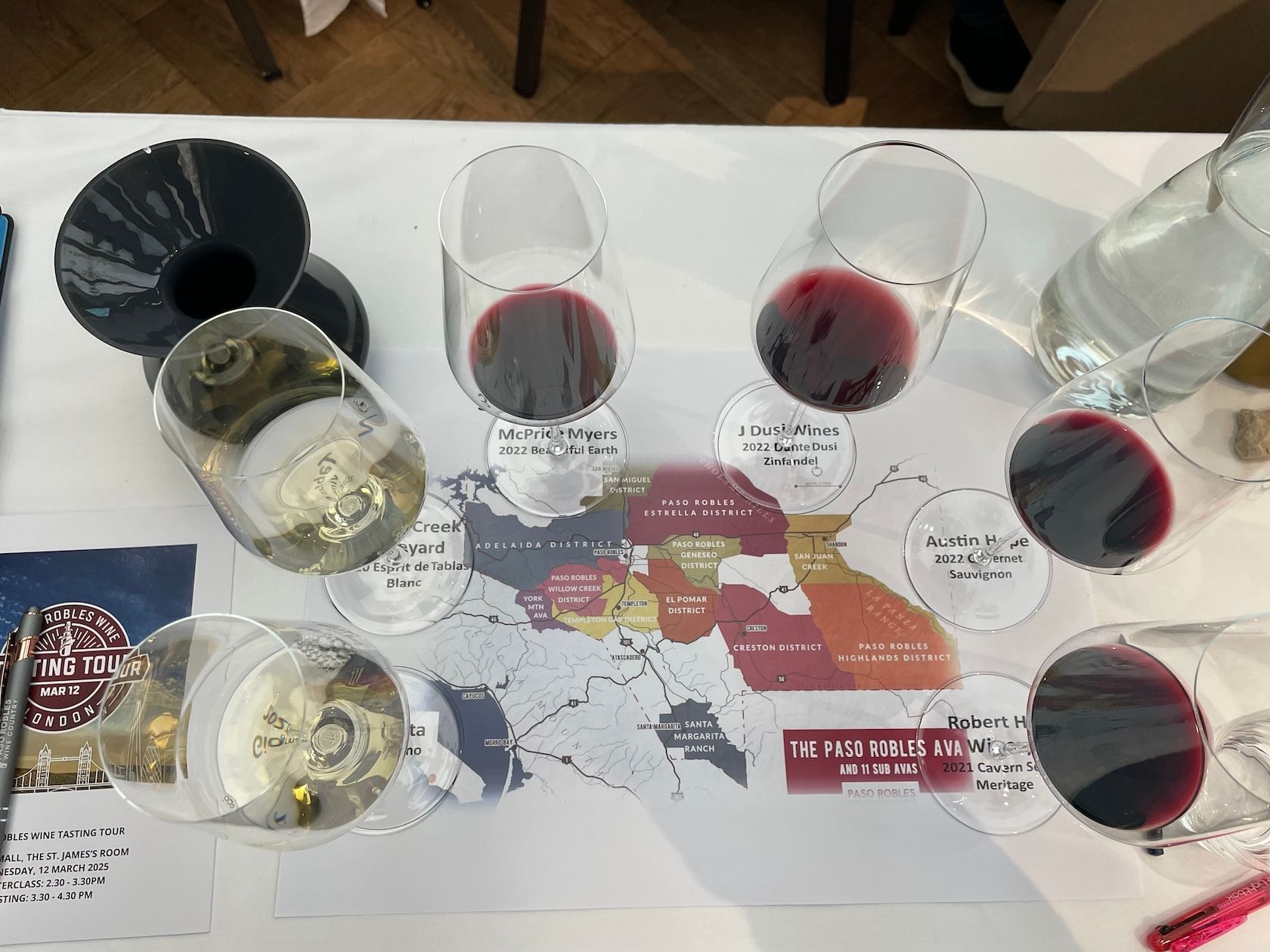“There are so many little gems to discover in this small wine region of Austria and at the end of this feature is a summary of all 16 wines I have tasted during three sessions,” writes O’Connor.
Explore Carnuntum was an event which focused solely on Carnuntum which was officially made a Districtus Austriae Controllatus (DAC) in 2019, and is one of the smallest wine regions of Lower Austria with only 906 ha.
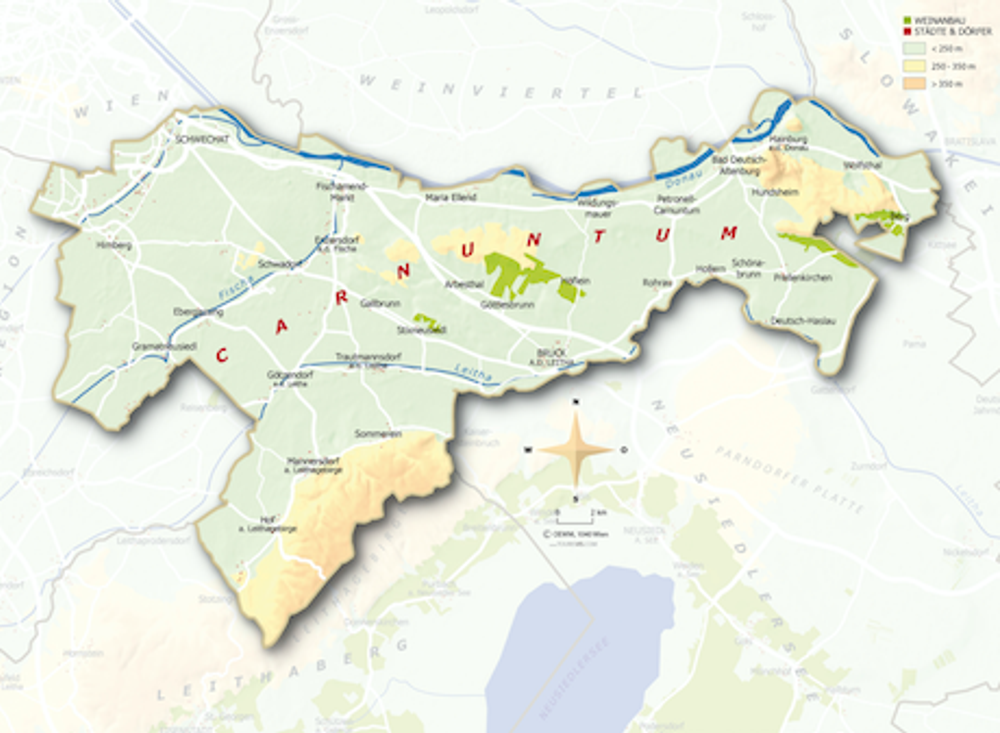
Carnuntum DAC lies on the far eastern border of Austria. With an intensely continental climate this region for me is about freshness and fruit. Permitted grape varieties are Grüner Veltliner, Weissburgunder (Pinot Blanc), Chardonnay for white,with Zweigelt and Blaufränkisch in the red league. Major wine production is red (54.3%), with Zweigelt (26.4%) leading the game, but from amongst the whites Grüner Veltliner is not far behind this (21.2%).
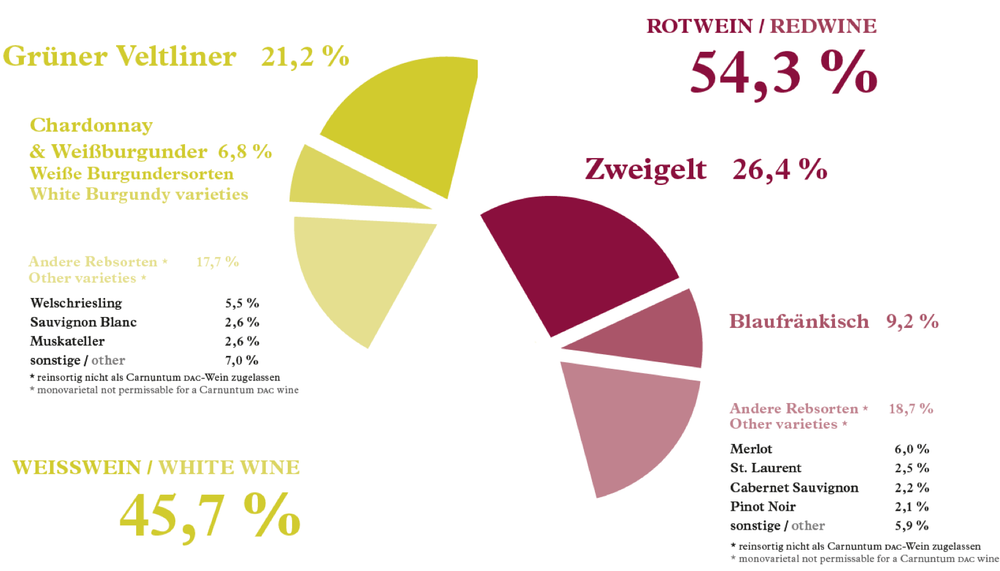
The terroir is influenced by the Danube river, Carpathian mountains and Pannonian plain. Primary soils are loam, loess and gravel, where Zweigelt thrives. In the easternmost part of Carnuntum, in the Spitzerberg vineyard, there are layers of limestone covering granite, providing good conditions for Blaufränkisch.
The region also pays particular attention to sustainability and is on track to reach nearly 50% organic and biodynamic farming by 2022, with 15% of growers with fully certified, sustainable production in 2021.
There are six appellations within Carnuntum with Göttlesbrunn being the largest followed by Höflein, Stixneusiedl, Petronell-Carnuntum, Hainburg and Prellenkirchen. Terroirs are extremely varied, which are beautifully reflected in the flavour profiles and texture of the wines.
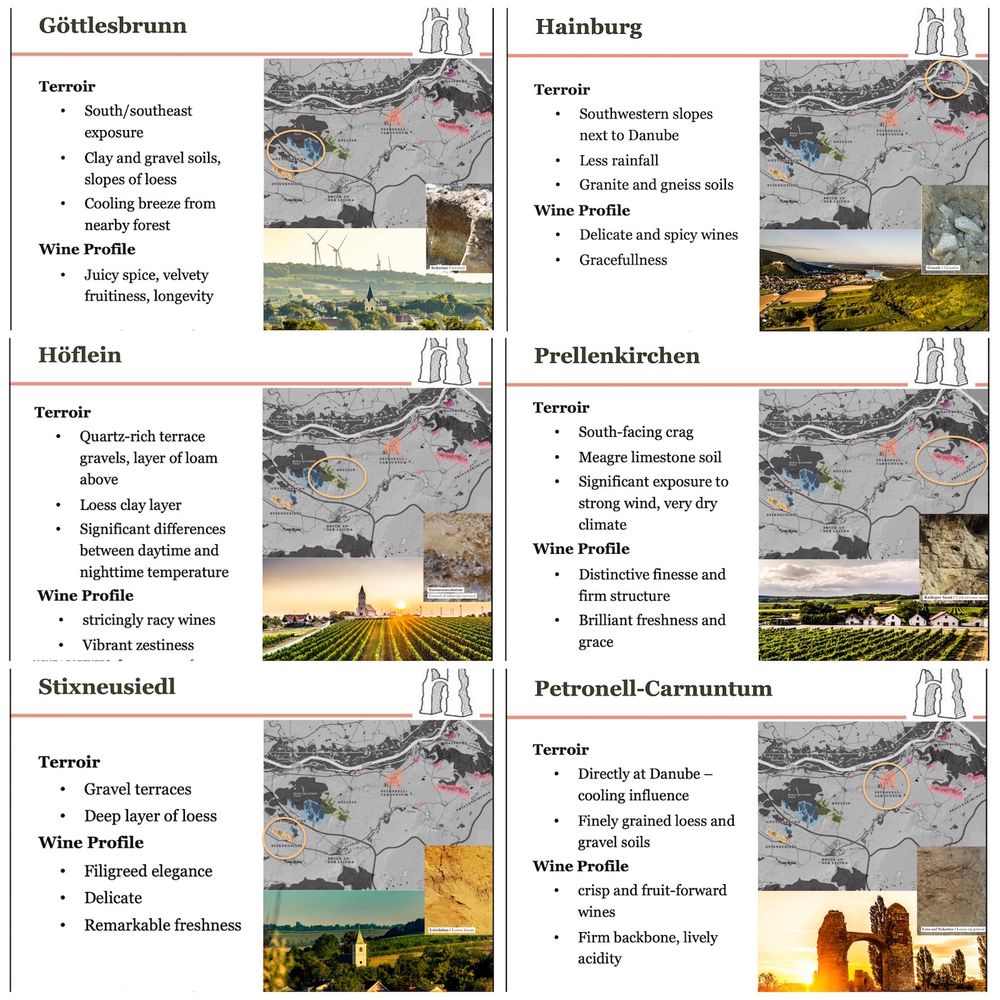
Gems from Explore Carnuntum
Rubin Carnuntum is an impressive brand of red with its lively and fresh, clean and crispy style. Some 25 members of the Carnuntum wine association initially produced this wine in 1992. Requirements for participation are the attainment of a minimum must weight of 18° KMW or a minimum alcohol of 12.5% – and passing the scrutiny of an annual jury tasting. In the DAC it is labelled as “Gebietswein” (region wine) with a price range between €8.50-11.50.Only Zweigelt can be used for the production of Rubin. Oh, and look out for the logo on the capsules for these wines.
Amongst whites, I enjoyed the edginess of Weingut 20′er Schulz’s Weissburgunder. The winery is at the heart of Carnuntum, in the wine growing town of Göttlesbrunn, cultivates 14 different varieties on its ten hectares of vineyards, with a roughly even split between reds and whites. At any given time, roughly 30 different wines are maturing in its cellar.
Michael Auer cultivates 12 hectares of Welschriesling, Chardonnay, Zweigelt, Syrah, Pinot Noir and Blaufränkisch. He produces estate, village, and single-vineyard wines, which he creates in a way to reflect their origins and terroir. Auer follows a steadfast approach, working hand-in-hand with nature and relying on whole cluster fermentation in the pursuit of balance. His single vineyard red cuvée Ried Bühl shows a lot of potential.
There are so many little gems to discover in this small wine region of Austria and below is a summary of all the 16 wines I have tasted during three sessions.
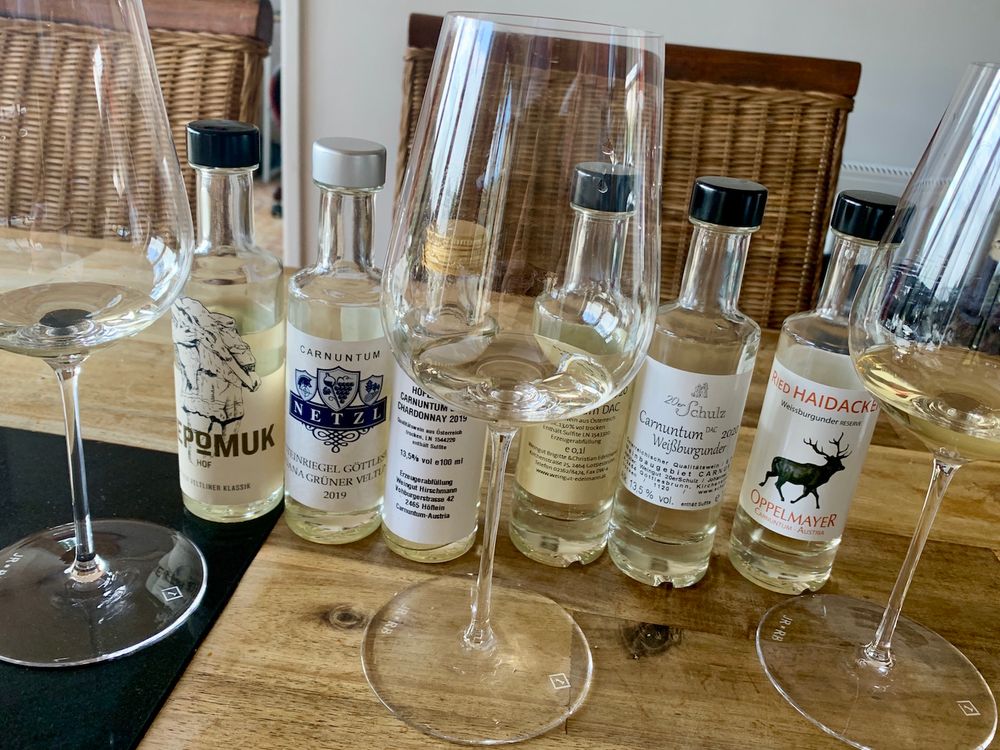
Discovery Session #1: Carnuntum DAC White
The six wines tasted during this session reflected purity and crisp freshness. Climate-wise growers find it helpful that high winds contribute to vine protection against disease. More details with a recording of this session here.
Nepomukhof, Christian Grassl, 2020 Gruner Veltliner
Pale yellow. Hint of honey hits the nose, pepper and petroleum, clean and fresh. Minerally citrus notes on the palate, pepper too, sandy texture, bone dry.
Weingut Martin Netzl, Stoana 2019 Grüner Veltliner
40 year old vines, single vineyard. Pale yellow. Chamomile, spice, green bell pepper. Mineral complexity with broad length on the palate. Edgy, balanced and energetic. Lovely!
Weingut Brigitte & Christian Edelman, Chardonnay, 2020
Aged on fine lees in stainless steel. Tropical and fresh nose with red apple. Lovely, creamy texture with citrus notes and the tanginess of pink lady apples. Straightforward and refreshing.
Angelika Pimpel Artner 2019 Chardonnay
Organic. Vineyards up to 270 metres. Gravel soils and nearby forests cool the vineyard temperature. Harvested by hand at the end of September. Aged on fine lees. Pale yellow. A little closed at first with delicate notes of acacia and biscuits, opening up to more tropical notes of pineapple. Nice and edgy. Creamy smooth palate with good bite turns into minerality and length. Finishes just a touch green.
Weinbau 20er Schulz, 2020 Weissburgunder
Pure and elegant nose with a playful little kick of white pepper, peach and lime. On the palate it’s like biting into a ripe peach, there is crunch and juiciness. But minerality soon appears with striking acidity and complements the bite with lots of balance. Edgy, cool and still a little baby.
Weingut Oppelmayer, 2017 Weissburgunder Reserve
Aged in 50% new oak. Medium gold. Citrus, honey and nuts on the nose. Smoky. The oak however overpowers the fruit. Nice minerality, roundness and complexity on the palate, but missing a bit of fruit and freshness. Definitely a food wine. Would go well with spicy asian food. Drink now.
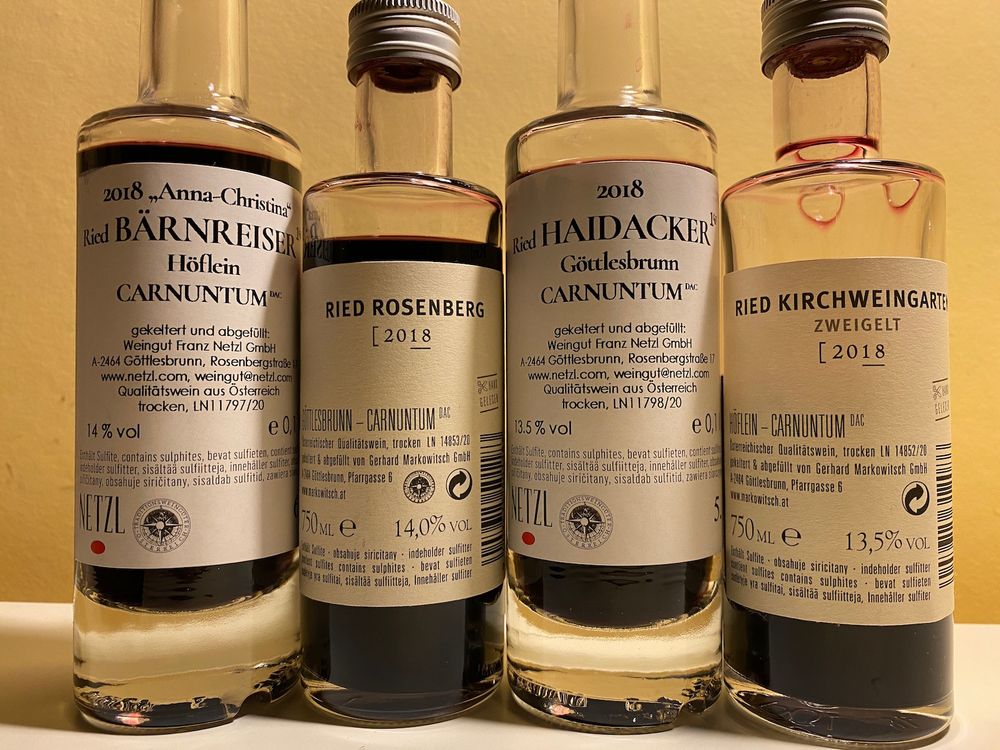
Discovery Session #2: The many faces of Zweigelt
I have long admired the attention Austria gives to Zweigelt. It shows and it deserves it. The following six wines reflected the terroir perfectly and they were all very different. See more information and a recording of the masterclass here.
Pelzmann, Rubin 2019 Zweigelt
Medium purple. Playful, fruity, fresh, brambles and morello cherries on the nose. Crunchy palate with a delicate oak frame. Smooth tannins coating the edge of the tongue and a nice kick of acidity, all in harmony.
Christian Dietrich, Rubin 2018 Zweigelt
10 months in used large barriques after stainless steel fermentation. Medium brownish-purple showing a bit of oxidation. On the nose too, reductive. Peppery, cocoa, with leather and violets. Fruit shows a little over ripe.
Gratzer-Sandriester, Rubin 2017 Zweigelt
Gentle pressing, aged in barrique, American oak. Bright purple. Leafy, cherry, with peppermint notes with a touch of vanilla. Crunchy-crisp, rocket, aniseed, juicy red fruit palate, good balance, soft tannins and good length.
Michael Auer, Ried Buhl, 2018
Single vineyard. 30 year old vines. Gently pumped over once a day during fermentation and twice after. 60% new French and Austrian barriques. Medium ruby. Pure, fresh, oozing in red fruit and forest berries, with a touch of frankincense and a whiff of cheeky oak spice hitting the nose. Red cherry, morello cherry. Richness and depth of fruit on the palate with a kick of pepper but this wine is also about texture with incredible stuffing and mouth-watering acidity. Generous length, well-integrated, fine coating tannins with a long life ahead.
Gerhard Pimpel, Ried Barnreiser 2018 1 OTW
Single vineyard from Gottlesbrunn. Hot year with perfect harvest conditions, hand harvested at the end of September. 21 days of fermentation in barrique with natural yeast. Deep ruby, ripe red berries with forest floor and clay on the nose. Juicy, peppery, this wine has power and character not least thanks to its high alcohol. Striking acidity and fine grain tannins will allow this balanced and fresh wine to have a long life ahead.
Pitnauer, 2018 1OTW
Medium ruby. Jammy, ripe cherry nose. Much lower acidity than the other two 1OTW Zweigelts. Astringent tannins are drying and the fruit could support the structure more.
Discovery Session #3: Carnuntum Villages
To show the differences of wine profiles this masterclass featured a selection of wines from Höflein, Göttlesbrunn, Prellenkirchen and Hainburg regions. See more here.
Göttlesburn
Gottschuly-Grassl 2019 White
PB, CH. PB on fine lees in stainless steel and partially in oak. Chardonnay fermented on the skin in stainless steel. Spontaneous fermentation.
White flowers, citrus fruit, clean nose. Good acidity and grip on the palate and creamy, elegant texture. Salty length but a little bitter finish.
Weinbau Markus Lager 2018
Zweigelt. Matured in new barriques for 14 months plus one year in the bottle.
Dark ruby. Vanilla, back cherry, minty, cherry nose. Is this purity a sign of Göttlesburn? Crunchy bite, but tannins need to integrate.
Höflein
Hirschmann, 2019 Chardonnay
Small part in oak, mostly in stainless steel. Expressive fruit, chalky mineralty. Balanced acidity, crispy fruit, clean and pristine. This Chardonnay reflects the geographical set-up and climate of the region well – quite Chablis-like, but also so much about this wine is about texture.
Leo Jahner 2019, Zweigelt
18 months in 300 and 500l oak barrels with small part in tank. Tank sample – bottling next 3-4 weeks.
Mid-purple. Cherries and nutmeg on the nose. Juicy with good acidity, but very young and needs to integrate.
Hainburg
Michaela Riedmuller 2019, Gruner Veltliner
Hand harvested on 3rd week of September. Stainless steel fermentation on lees.
Pale gold. Lime and liquorice on the nose with a touch of grass. More towards tropical than grassy on the nose. On the palate, broad, with hints of lemon peel and a generous streak of acidity, leaves a salty mineral length. Pretty wine.
Prellenkirchen
Josef Pimpel 2018, Blaufrankish
Black and red fruit. Hand picked, selected and de-stemmed.
Cherry, raspberry with brambles and ripe blackberries. A touch of smoke. Elegant nose if a touch overripe. Soft tannins with great length, and a satisfying round body. I would like less oak and more fruit but still, this is an enjoyable wine.
